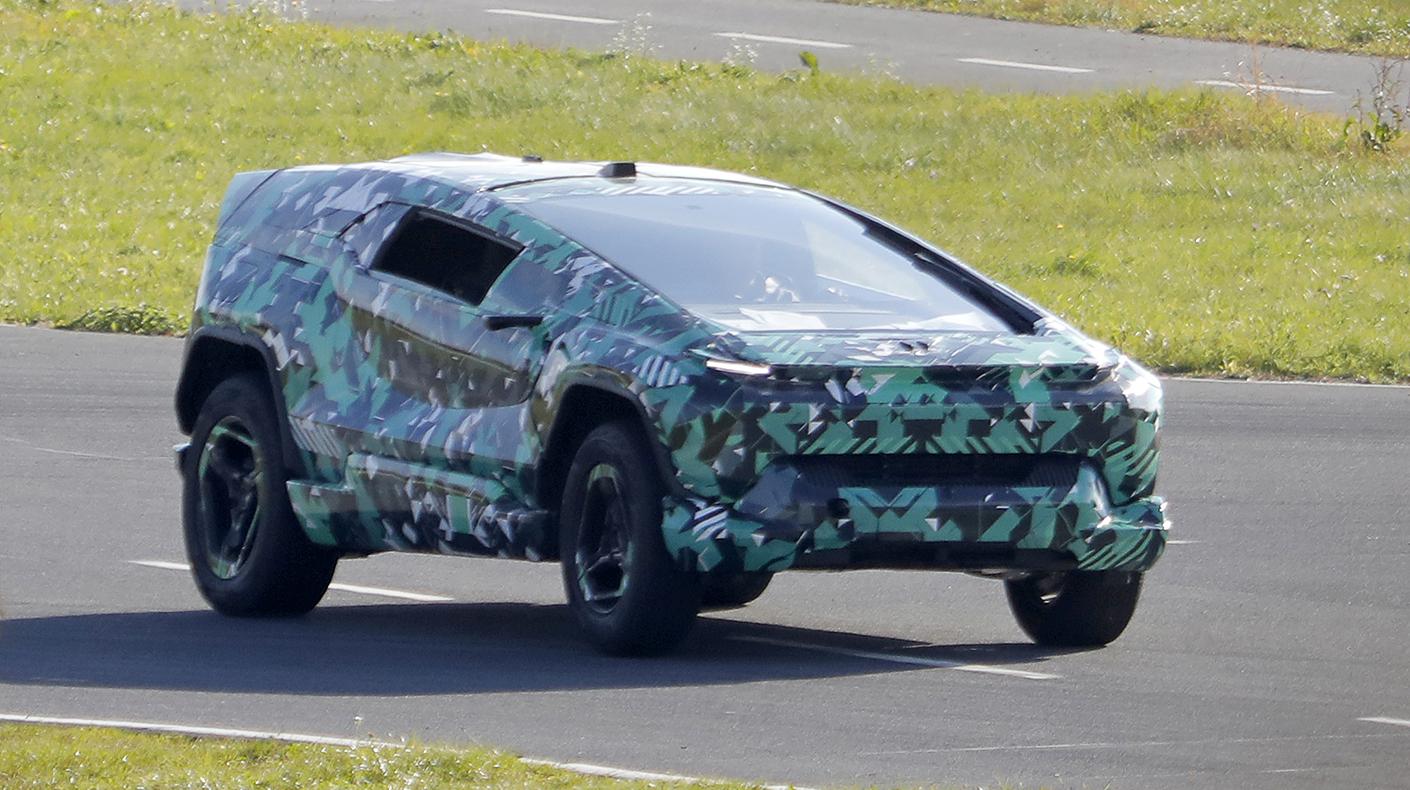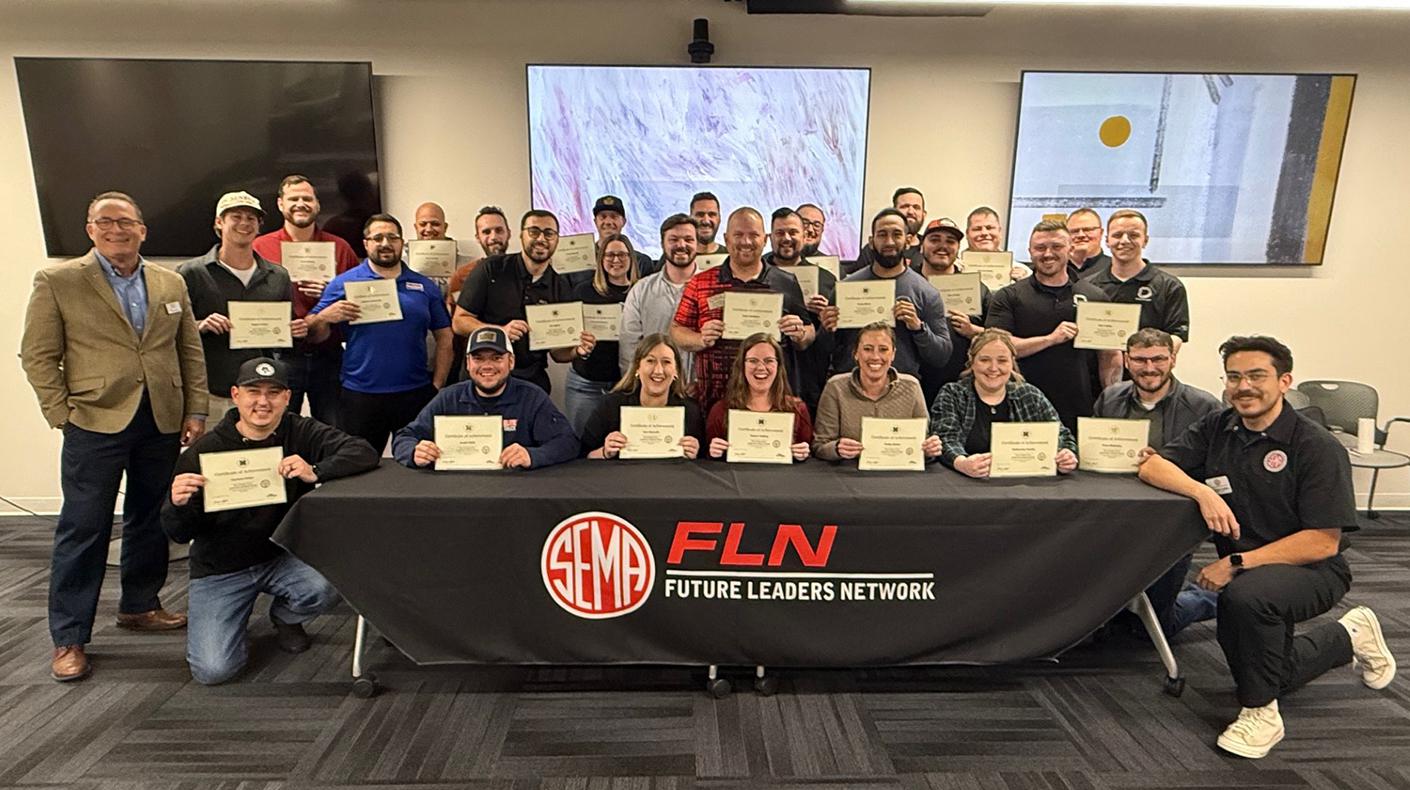By Douglas McColloch
The vehicular market segment that industry-watchers refer to as the "powersports" market is, in a way, easier to label than it is to define. What, after all, is the connective tissue that joins such disparate market segments as ATVs and side-by-sides, motorcycles and dirt bikes, snowmobiles and personal watercraft--especially considering that very few of these vehicles are ever used in a "sporting," i.e., competitive venue?
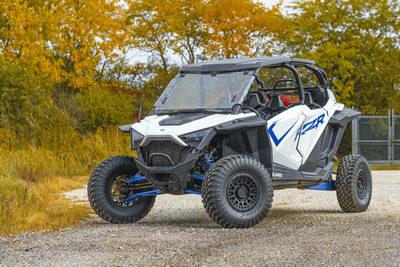
New players continue to enter the powersports market. Atturo Tire has recently launched two new tires for UTVs, the Trail Blade X/T SXS (pictured) and the Trail Blade Boss SXS. Photo courtesy: Atturo Tire
Whatever it is, one thing is certain: the powersports market is growing. The U.S. market experienced an unprecedented surge in demand in the first year of the COVID-19 pandemic, and combined with low levels of inventory, the market enjoyed record profitability at the dealership level. Likewise, the global powersports market grew by a record-setting 10% in global unit sales in the year 2020, according to a 2022 study from Stratview Research. And while sales have cooled gradually since then, more growth is the outlook going forward.
How much? The global powersports market, currently valued at $37 billion, is forecast to reach a valuation of $69 billion by 2032, with a 6% compound annual growth rate (CAGR) during the period, according to a 2023 survey published by Allied Global Insights. This expected surge is ascribed to several factors, including the increased popularity of larger side-by-side UTVs in the North American market; the lingering impacts of COVID-19 and its stimulative effect on backcountry travel; increased allocations from government entities for military use; increased consumer demand in South America and the Middle East; and increased demand for electrification, particularly in the European market.
In any event, the powersports market presents considerable growth opportunities for companies that currently serve this sector, as well as for others that can innovate new technological advancements for these vehicles and bring them successfully to market.
For this article. we consulted several industry experts for their assessments of the powersports market. What follows has been edited for clarity and length.
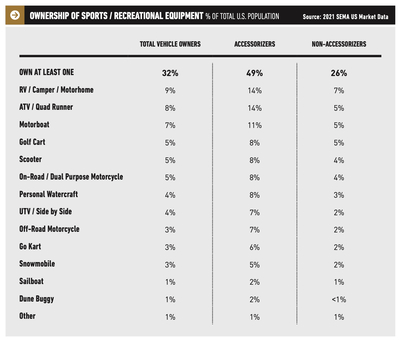
According to the latest "SEMA Market Report," owners who accessorize their vehicles are nearly twice as likely to own a second, recreation-oriented vehicle than non-accessorizers.
The State of the Market
Overall, our sources felt the state of the market was solid, though most cautioned against the likelihood of another growth surge as was the case in 2020.
"I would say the market is in recovery," said Jason D’Armond, director of sales and marketing for PRP Seats. "COVID was a big boom for the off-road industry, and last year we saw the pendulum swinging back a bit. We expect it to contract a bit more this year but stabilize."
On the other hand, Josh and Matt Martelli, owners of motorsports marketing group Mad Media, are seeing more optimism from their industry partners. "Most [supply-chain] issues have been resolved, but there seems to still be a greater demand than supply for both sport-model UTVs. Overall, the market appears to be strong, and the companies we are speaking to are excited for 2023 and the events we have planned for consumer-facing activation."
Glenn Hansen, editor of Powersports Business, related his experience at the Parts Unlimited NVP Product Expo, held in Louisville, Kentucky, last January. "I talked to dozens of aftermarket companies and interviewed and listened to Parts Unlimited executives," he said, "and there’s a lot of optimism with a little bit of hesitation behind it--but on the whole, optimism and excitement moving forward."
In any event, there appears to be plenty of room for growth within the segment. As proof, companies that hadn’t previously been a presence are now entering the space with powersports-specific products. Pennzoil, for one, has introduced a new line of lubricants for quads, UTVs and watercraft. "Whether it’s enjoying the backcountry on an ATV or enjoying time boating with the family, we're excited to bring this new line to outdoor enthusiasts to give them peace of mind during their adventures," said Bree Sandlin, Shell vice president of lubricants marketing.
Similarly, Wilwood Engineering has recently launched its first-ever UTV disc-brake conversion kits for the Polaris RZR, Honda Talon and Can-AM X3. "UTVs are bigger than anyone would think," said John Grieco, Wilwood marketing manager.
And Atturo Tires has entered the powersports market with two new tires designed for UTVs, the Trail Blade X/T SXS and Trail Blade Boss SXS. "Atturo may be new to the powersports market, but we will be a familiar name to the UTV consumer," said Michael Mathis, president of Atturo Tires. "Nearly every side-by-side owner already owns a truck and will be familiar with the Atturo brand from our years in the market."
The OE manufacturers themselves are similarly diversifying their product lines to meet a growing demand from consumers seeking more varied uses for their vehicles. Polaris, for one, has reintroduced its Ranger UTV series aimed at farmers and ranchers, and re-engineered the Sportsman ATV line for extreme terrain such as mud and snow.
"We are constantly learning from the unique ways customers use our products," said Steve Menneto, president of Polaris Off Road. "From mudding to property maintenance, these vehicles are purpose-built with enhanced features that enable our customers to make the most of their day, and we’re excited to bring them back for 2023."
"The sport side gets the glamour," Hansen added, "but there’s such a bigger marketplace for the whole utility and professional or 'prosumer' side, such as small-time landscapers who use their vehicles for work during the week and then go hunting on the weekends."
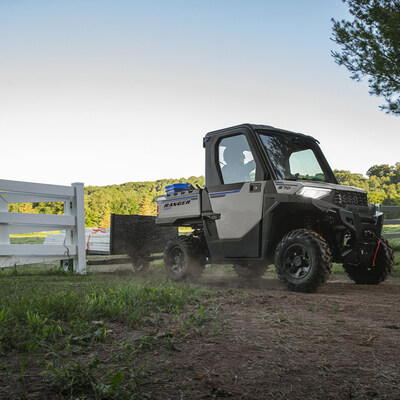
Gauging The Market: What's Hot
Our panel of experts generally agreed that UTVs continue to set the pace, and among these, the Polaris RZR Pro XP/Pro R/Turbo R platform were cited as continued sources of growth, though D'Armond noted lower adoption rates from what was typically the case with new models in the past. "There are still a lot of the previous platform on the trails," he explained, "and Can-Am has been gaining greater market share with the X3 platform."
Hansen points to a growing diversification of the market, as more players enter more market niches. "Polaris continues to do well. A company like BRP continues to innovate and draw attention to their unique products, and they’re talking about electric motorcycles under the old Can-Am name. Triumph is doing amazing things. Their sales have done quite well, and now they’re talking about getting involved in off-road and supercross racing."
As with late-model trucks and SUVs, consumer preferences in the North American market seem to lean towards "bigger is better." The Martellis see "the increase in the size and power of sport UTVs driving the growth of the market. The new faster, stronger, more powerful UTVs are attracting new customers that might have otherwise opted for custom-built trucks with large motor packages--further expanding their market reach."
The powersports market has always held a strong appeal for accessorizers. According to the latest "SEMA Market Report," owners who accessorize their vehicles are almost twice as likely to own off-road recreation equipment--in particular ATVs, RVs and motorboats--in addition to their primary vehicle(s).
"In the UTV segment, tires and wheels, radios, fresh-air helmets, aftermarket bucket seats, additional light bars and light pods, and race-quality harnesses remain strong market leaders," said Josh Martelli. "OEMs like Polaris, Can-Am and Kawasaki have done a great job improving the accessories that now come standard with most sport-model UTVs, but for the more advanced UTV riders, there is still a need for these additional features and creature comforts."
"The tire market is always good across the board since they are a highly consumable product," Hansen concurs. "Gear is another big item, whether it's fashion-related or performance-related or providing protection for off-riders."
"Storage is always a need for UTV enthusiasts," D'Armond said. "It’s why we R&D and launch complete suites of storage options for every new sport UTV to hit the market. Our Kawasaki KRX suite did particularly well in the last couple of years and we’ve expanded into the crossover UTV market.
"Seats also continue to be strong. People want to be comfortable on their long rides, and stock seats just don’t do it for most."
Another new market driver is the emergence of women in the segment. According to a 2018 survey conducted by the Motorcycle Industry Council, nearly one in five motorcycle owners are women, double the number from 10 years earlier. "Adventure-bike riding gear is expanding on the side for women riders who want something more than just a motorcycle jacket that fits a smaller man," Hansen notes. "That’s a growing market for sure."
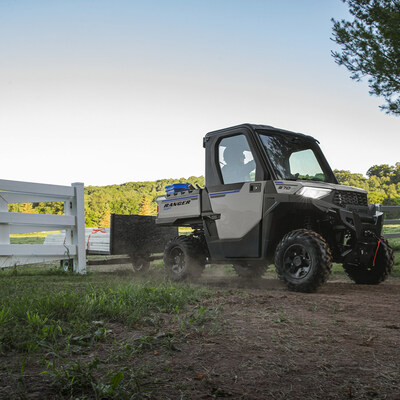
Sport UTVs may get the most enthusiast attention, but many UTV owners use their vehicles primarily for work. Polaris recently re-introduced its Ranger line with farmers and ranchers in mind. Photo courtesy: Polaris
Consumer Trends and Marketing Opportunities
Most of our sources continued to be bullish on the subject of overlanding, at least for the near term.
"Overlanding is definitely top of the list when talking about growth in off-road," said D'Armond. "Our concern is the longevity of the trend, so the products we're looking at developing will serve a wider audience."
The Martellis agree. "The overlanding market is on fire. The pandemic gave it a huge boost because folks had less to do locally and time to get out and explore nature and trails and parks in the United States. In every product sector--from portable power stations to solar auto packages to camping trailers, you name it--it's all up." Hansen likewise concurs, adding that overlanding "opens up a door for all kinds of companies that make the right products to get you to places where you can do some off-road camping."
Most of our sources agreed that racing is still a potent marketing tool, though some of our experts suggested that its true value lies in the racers themselves and the credibility they bring to their products via social media.
"The audience for off-road racing is limited," D'Armond said. "It's not always spectator-friendly and there's not a lot of coverage like you see for things like rally racing in the European Union.
"For us, the opportunity centers more around using the athletes as influencers via social media. We look for people who have a dedicated race program and know how to communicate well. The days of slapping a sticker on the side of a car seem to be over. There's a lot more required of racers now to help promote their sponsors."
Still, racing's potential power as a market mover can’t be overlooked completely. "Marketing at race events provides the best opportunity for proof of concept, on-site activation, and social reach," Josh Martelli explained. "Marketing messages today get lost in the noise. But when paired with engaging content, they can track up to 600% more effectively in viewer engagement."
Hansen points to MotoAmerica’s King of the Baggers racing series, which began as a single event in 2020 but which has since expanded into a multi-race circuit nationwide, as an example of how a small niche can drive interest at the dealership level: "It's basically V-twin Harley-Davidson and Indian touring bikes that literally have hard bags on them. They had a whole race season last year, and it got great TV attention and it drew a bunch of interest. The series is expanding with a lot of publicity and promotion behind it, and savvy dealers are taking advantage of it."
Another potential growth market for powersports manufacturers is the defense sector. Polaris was awarded a seven-year, $100 million contract in 2020 to produce the MZR Alpha light-tactical vehicle, and more recently, GM Defense has delivered its larger, nine-passenger, Chevy Colorado-based Infantry Squad Vehicle (ISV) for analysis and testing. Additionally, the Army is looking to increase the number of hybrid-electric and all-electric troop transporters for the future to meet its 2022 Climate Strategy Implementation Plan, which opens another potentially lucrative market for manufacturers in the future.
On the subject, electrification is a growing trend, though not across every segment of the market. Segway's powersports division has released an industry-first hybrid-electric ATV and UTV, and Polaris made a splash with the 2021 debut of its all-electric Ranger XP Kinetic, the first fruits of a 10-year joint venture with Zero Motorcycles to produce a full line of electric ATVs, UTVs and snowmobiles; Polaris is aiming to electrify its entire vehicle line by 2025.
"Electrification is making an impact in powersports," Hansen said. "It's happening in some segments more than others, but it's happening for powersports dealers who are open-minded enough to say, 'Hey, there's a place for this.' On the UTV side, there's lots of opportunity from Polaris to new players on the youth vehicle side, from small ATVs to motorcycles. Look at Greenger partnering with Honda to put the CRF label on electric dirt bikes. There's a lot going on there, and it’s exciting to be a part of it."
But given continued concerns over vehicle range and battery life, some of our experts still maintained that the impact of electrification would be gradual for the near term. "We're keeping our ear to the ground, though," D'Armond adds.
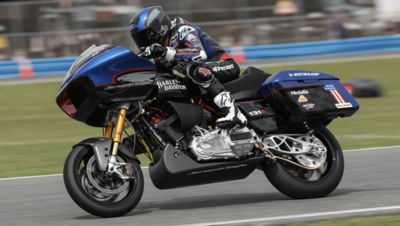
A new entry to the racing scene, the MotoAmerica King of the Baggers series, which features Harley-Davidson and Indian touring bikes, began as a one-off two years ago and has expanded into a nationwide multi-race series. Photo courtesy: Harley-Davidson
The View Ahead
Most of our panelists took a guardedly optimistic attitude toward the coming year, citing higher interest rates and ongoing supply-chain issues as causes for concern. While D'Armond forecasts a slight a drop in sales, the Martellis see long-term growth fueled by a devoted enthusiast base: "Off-roading is a culture--meaning that people just don't stop being off-roaders when times get tough. They just get selective about their spending habits.
"We're still in a post-pandemic space where consumers want to customize their vehicles, explore with them, and turn them into mobile offices equipped with solar power solutions--and now, even remote internet access thanks to products like Starlink. There are no real indicators that any of that excitement and energy will taper off, especially since gas prices have largely returned to normal."
"I don't think we're headed for a deep recession like a lot of people might want to think," Hansen observed, "though we can force our own errors if we're not careful."
Hansen also noted that a term such as "growth" can be difficult to quantify at times. "Some of it is hard to measure. As an example, I think that consumers are still going to buy a lot of used motorcycles in their communities, but those dollars and those sales aren’t counted as 'growth.'
"I think if we’re flat, we’re good," Hansen concluded. "But I think there will be continued activity that allows aftermarket companies and dealers to have success in their markets."
This story was originally published on April 20, 2023. For more industry news, visit SEMANews.com and subscribe to SEMA News at the bottom of the webpage to get the latest updates straight to your inbox, twice a week.


